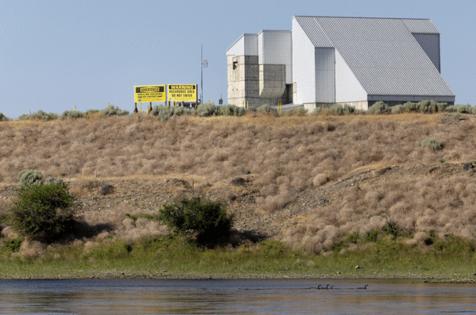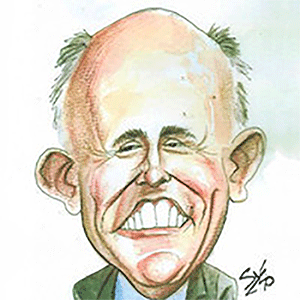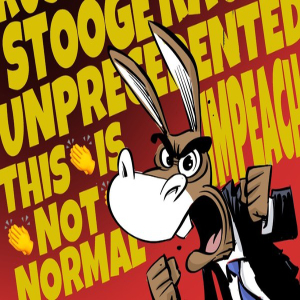Nuclear weapons safety oversight in decline with Trump, Biden inaction
Published in News & Features
SEATTLE — The lone independent federal agency responsible for ensuring safety at U.S. nuclear weapons sites will lose its ability to issue recommendations for safer work by January if the Trump administration doesn’t replenish its board, which this month dwindles to one member.
The Defense Nuclear Facilities Safety Board ensures adequate public health and worker safety by scrutinizing hazardous work conducted by the U.S. Department of Energy and its contractors that produce and maintain the nuclear arsenal. If the Trump administration and Congress don’t move quickly to populate the board, it will be incapable of issuing formal safety recommendations to the Energy Department, according to a report last month from the Government Accountability Office, Congress’ investigative arm.
If the board is without a quorum of at least three members for a year, “the agency would essentially be able to offer only nonbinding advice to DOE,” according to the report.
“The whole idea of having the board in place is to provide the optics in addition to the substance,” Nathan Anderson, a Washington state-based director in the GAO’s natural resources division, told The Seattle Times.
The board does not have regulatory or enforcement authorities, but its advice carries significant weight and cannot be easily dismissed or disregarded, the GAO report states. The board’s recommendations to the U.S. secretary of energy are published for public comment, and the secretary must respond in writing. The board also reports each year to selected congressional committees on its recommendations to the Energy Department and any outstanding safety problems.
The safety board “operates with the power of persuasion,” Anderson said, and without a quorum the Energy Department and its contractors could take safety less seriously.
Congress established the safety board in 1988 to gain public trust in nuclear work after high-profile accidents at Three Mile Island and Chernobyl. Without a functioning board, Anderson said, that trust can be lost if an unchecked hazard leads to an accident.
The board employs about 110 people, including technical experts who regularly inspect nuclear sites and issue reports that provide the most accessible public view into safety at U.S. nuclear weapons sites. The government has acknowledged through benefit payments that thousands at those sites have been sickened and killed by workplace exposure to hazardous material. The inspections will continue despite the board’s depletion.
Safety board influenced changes at Hanford
The board’s intervention in 2010 and 2011 led to changes to the design of a Hanford waste treatment facility in Washington that whistleblowers had called unsafe.
The whistleblowers’ warnings were verified by the safety board’s technical staff, prompting congressional hearings. The Department of Justice then accused the whistleblowers’ employers of illegally lobbying to undermine federal oversight of their work at Hanford and using defective equipment on the waste treatment project.
Those contractors denied the allegations but settled with the Justice Department in 2016 for $125 million. The three Hanford whistleblowers’ share of the settlement was over $31 million. Four years later, the whistleblowers’ information led the Justice Department to win a second settlement against the contractors, for $57 million, after the companies admitted to overbilling.
Board members are appointed by the president and must be confirmed by the Senate. Even if new members were appointed immediately, multiple years could pass before the board is at full strength again, according to the GAO’s report.
Already, the board has been without a quorum since January because members’ terms expired and replacements haven’t been nominated by the White House. The board’s last formal recommendation was issued a year before that. The board also slipped below a quorum during the Biden administration, marking the only times in its 37-year history that it lacked a quorum.
The Trump administration is in the process of interviewing prospective board nominees, the White House press office told The Seattle Times via email before the partial federal government shutdown. Since the shutdown, inquiries to the White House for updates have been met with automatic replies saying that the press office is operating at limited capacity and to expect delays in its responses.
As an independent voice not required to consider the cost of its recommendations, the safety board historically has found itself at odds with presidential administrations, their Energy Department leaders and contractors, according to Allison Bawden, a Washington, D.C.-based director of the GAO’s natural resources division. The board’s recommendations can slow down work, affecting lucrative bonuses to contractors and throwing Energy Department budgets and project timelines off track, she said.
When the board presents a recommendation to the department, the energy secretary can accept it — and the costs — or reject it for any number of reasons, including cost, according to Bawden. “That is actually an acceptable approach,” she said. However, an administration’s objections to the cost of implementing recommendations are “not a reason to remove or reduce the safety board’s oversight.”
In the years since it supported Hanford whistleblowers, the safety board has dodged efforts to limit its access to operations at the nuclear sites, withhold from the public its inspectors’ findings and outright eliminate the agency. During Trump’s first presidency, boards of other federal workplace safety agencies were depleted by dismissals and unfilled positions.
“Starving the Defense Nuclear Facilities Safety Board of the resources and manpower it needs all but guarantees that our country will experience more accidents,” said Sen. Ron Wyden, D-Ore., who helped bring the Hanford whistleblowers’ concerns to Congress in 2011. “I’ll continue fighting against any efforts by the Trump administration that further undermine oversight and safety at these facilities and put Americans at risk.”
The weakening of nuclear safety scrutiny comes at an inopportune time, GAO officials and close observers of Hanford said in interviews.
Anderson said the Energy Department’s own workforce that oversees safety at nuclear sites has been understaffed for years and exacerbated by recent Trump administration layoffs of federal workers.
The U.S. is halfway through a 30-year, $1.5 trillion campaign to refresh its nuclear arsenal, the most ambitious buildup since the Cold War that involves hazardous work with plutonium and other volatile materials. Bawden said the diminished safety oversight of that work coincides with an aggressive production schedule.
“Right now, there is kind of an overall philosophy of speed over regulatory activity,” she said.
Nikolas Peterson, executive director of the watchdog nonprofit Hanford Challenge that monitors worker and public safety among other aspects of Hanford’s operation, lauded the safety board for making improvements in its own work that were noted in the GAO report.
“So right as things are getting better, to kind of cripple the DNFSB would be a mistake,” Peterson said. “I’d hate to see them lose the progress they’ve made.”
The board has inspectors on-site in Washington, Idaho, California, Nevada, New Mexico, Texas, Tennessee and South Carolina. Bawden said the GAO hasn’t observed evidence that safety has eroded during the absence of a board quorum. But if its authority to issue recommendations is clipped, that could change, she said.
“That is a rational concern.”
©2025 The Seattle Times. Visit seattletimes.com. Distributed by Tribune Content Agency, LLC.







Comments